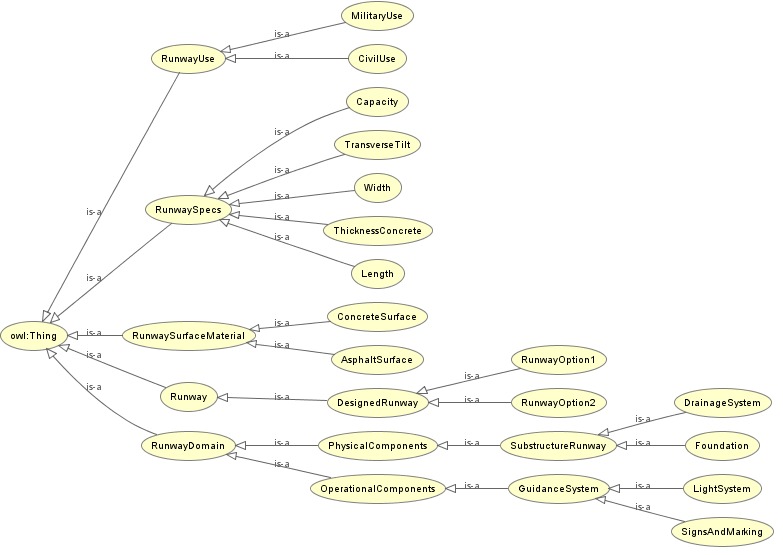This Parametric 3D-Model is a model of an airport runway. An airport runway is the central part of an airport. It defines which kinds of aircrafts are able to land and start at the airport and all other parts of the airport are built around the runway.
The direction of a runway is defined by historic wind data and the direction of starting airplanes is decided every day once the weather predictions are precise enough.
Interfaces
Being the central part of the airport infrastructure means the airport has to interact with all other parts of the airport. It is the interface of passenger traffic (controlled in the terminal) and air traffic (controlled by the ATC in the tower). It is interacting with nature (full exposure to weather). It is the only way to access an airplane on the ground: in case maintenance work is going on, the airplane needs to be brought to a hangar so the runway needs to have connection ways to both terminals and hangars.
Parameters / High Performance Criteria (HPC)
The Runway consists of different parts. In this model it is limited to the following parts with parameters that can be adjusted in the model:
- airport runway
- Length [m]
- Width [m]
- Transverse Tilt [°]
- side strips (green, buffer in case of turbulences)
- Width [m]
- exit
- Length [m]
- Location [-]
Ontology
The decomposition of the runway was done according to the following ontology. The “soft” parameters like Guidance System or Use were not implemented because they depend on too many other parameters like local guidelines and the general layout of the airport. From an engineers point of view the most interesting part is the actual structure and the parts of the structure are implemented.
One possible design option can be seen in the 3D Model below:
Download: runway_model & runway_ontology.

